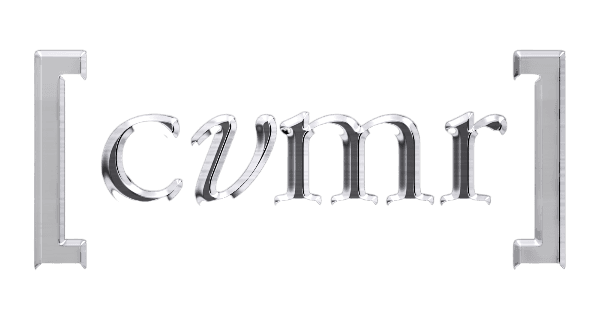The Carbonyl Nickel Coin Manufacturing Concept
1. Background
The carbonyl or Mond process was discovered in 1884 when Ludwig Mond noticed that hot carbon monoxide (CO) gas would severely corrode nickel. The carbonyl process exploits the ability of CO to form compounds with many of the transition elements in Groups VIA to VIIIA of the Periodic Table of Elements. The process works particularly well for nickel and it is reversible. That is, nickel can be extracted from a substrate, or deposited onto a substrate depending upon temperature. In general, at about 80 °C (176 °F), nickel reacts to form nickel carbonyl (Ni(CO)4)
Ni + 4CO → Ni(CO)4.
At 150–175 °C (302–347 °F), the reaction is reversed with nickel being chemically reduced and can be made to deposit on most substrates. The process has the ability to extract nickel from low- cost, low-value-added sources such that it is about 20% less expensive to produce nickel by the carbonyl process than by conventional extraction process metallurgy. Similarly, the process can be used to deposit nickel onto substrates such as planchets or coins at about 80% of the prevailing nickel price on the London Metal Exchange.[31]
The carbonyl process is used by CVMR® Corporation and Vale Inco Limited (a former International Nickel Company) commercially in several nations including the US, Canada, Germany, Great Britain and China. Carbon monoxide and nickel carbonyl are poisonous, so extreme care is exercised in building and operating carbonyl reactors. Each of the major carbonyl producers claims impeccable safety records. This claim was considered and verified through extensive discussions with CVMR® Corporation and Vale Inco Limited. Furthermore, no known safety issues were uncovered from application of the process at Inco since its first production implementation in 1910. Major products produced from the process include nickel pellets for plating electrodes, nickel powders of various sizes and morphologies, coated parts for corrosion and wear resistance, and bulk nickel parts with extremely fine detail. Since the cost of the clad or monolithic Ni/Cu coins had escalated sharply in recent decades, the carbonyl process was evaluated as a potential process to cost-effectively deposit nickel and nickel alloys on planchets and to also use the process for metal reclamation of worn coins. There being no known prototype or commercial practice of nickel carbonyl on coins, feasibility studies and scale-up were needed to assess and optimize the process, define plant configuration and to minimize the processing and plant capital costs. Experiments were proposed to corroborate these claims, some of which the United States Mint recently funded to be performed in cooperation with CVMR® Corporation. In short, the high price of nickel is a major driver for US circulating coins and the carbonyl process has the potential to reduce the cost of nickel coatings and to earn revenues by nickel reclamation as nickel-containing coins are replaced by lower-cost metals.
CVMR® Corporation can make a turnkey facility to deposit nickel on planchets or coins and also to reclaim nickel. The industrial base for carbonyl coinage in the US needs to be developed, but this could be done quickly with a firm financial commitment. CVMR® Corporation estimates that for approximately $30 million (M), a turnkey facility could be established at the United States Mint, a satellite facility or a commercial supplier. This one facility could meet US coinage production rate needs. Discussions with Vale Inco Limited indicated that a purposeful carbonyl facility dedicated to a single denomination, such as the 5-cent coin, could be purchased for about $10M.
Although the advantages of carbonyl nickel processing such as cost, recycling and low energy are well established commercially, there are possible barriers to good commercial coin practice that need to be addressed during a research and development campaign. These might include surface treatment before coating, adhesion of nickel to the base alloys such as zinc, copper and steel, distortion of the planchets in the reactor, residual stresses and coinability. The nickel layer may need alloying for wear resistance and for use in coin-processing equipment. It is possible that an alloyed nickel layer on zinc alloy planchets could be developed to approximate the electromagnetic signature (EMS) of the incumbent 5-cent coin.
The carbonyl manufacturing concept utilizes a modular extraction and coating facility. Its functions are a) to extract nickel from low-cost mining intermediates and worn nickel-containing components and b) to condense nickel as a coating on low-cost coin planchets.
The modular concept is to design and construct the plant as individual reactors dedicated to specific denominations as the volume of coins grows. For example, the first module could be dedicated to 5-cent coins, at a volume of 500M coins/year (coins/yr). The following cost analysis assumes that this 5-cent coin module could be constructed for $10M, with a return on investment (ROI) of less than 1 year. The expectation is that this module would be used to deposit a nickel carbonyl coating on steel or zinc planchets, at a cost of $0.001/coin.
The cost of depositing nickel by the carbonyl process is significantly lower than electroplating nickel. The metal cost savings versus the existing Cu-25%Ni 5-cent coin at the 500M coins/yr volume would be $19,981,500/yr for zinc-based coins and $21,904,000/yr for steel-based coins coated with a nominal 10 microns of carbonyl nickel. Also, this would open the door to nickel- coated-zinc coins, which are not now feasible by nickel plating due to plating stresses. The cost analysis follows.
2. Cost Analyses[32]
I. Electroplating Nickel Costs (Mazzilli Method[33])
Ct (Total Cost) = Cm (Material Cost) + Cl (Labor Cost) + Ce (Equipment Cost) (1)
A. Material Cost of Ni Coating
Cm = $8.70/lb x 0.10 g/coin/(454 g/lb) = $0.0019/coin (2)
B. Labor Cost, Cl
Hourly Wages (with overhead), W = $30/h
Plating Time, Tb (minutes, min) = t (thickness, µm) x dm (density, g/cc) x 60/[Amp/dm2(area) xg/Amp-h x current yield, %] = 20 x 8.9 x 60/[4 x 1.04 x 95] = 27 min;
where dm is decimeter and h is hours; g/cc = grams/cubic centimeter (3)
Specific Plating Time, tb = Tb x surface area/b (bath size in dm2) = 27 x 0.03/400 = 0.002 /coin (4)
Labor Time (min), ta = 0.002 min/coin
Cl = W x (ta + tb)/60 = 30 x 0.004/60 = $0.002/coin (5)
C. Equipment Costs, Ce = $35/h x (ta + tb)/60 = 35 x 0.004/60 = $0.002/coin (6)
Therefore, Total Cost, Ct, for Electroplating Nickel = $0.00192 + $0.002 + $0.002 = $0.006/coin. (7)
II. Carbonyl Nickel Coating Costs
Material Costs, Cm = $8.70/lb Nickel x 0.05 g/coin/(454 g/lb) = $0.00096/coin (8)
Processing Costs = $0.60/lb Nickel* x 0.05/454 = $0.00007/coin (9)
Therefore, Total Cost of Carbonyl Coating of Ni = $0.001/coin. (10)
* CVMR® Corporation estimate
III. Metal Cost Savings by Replacing Cupronickel 5-Cent Coin by Carbonyl Nickel-Coated Base Metal
A. Incumbent 5-Cent Coin
500M coins/yr/100 coins/lb = 5M lb coins/yr
Ni @ 25% = 1.25M lb/yr x $8.70 = $10,875,000/yr
Cu @ 75% = 3.75M lb/yr x $3.85 = $14,437,500/yr
Total Metal Cost = $25,312,500/yr
B. 10-µm Carbonyl Nickel on Zinc Planchet
Ni @ 500M coins/yr x $0.001/coin = $500,000/yr
Zn @ 500M coin/yr x 3.99 g/coin/(454 g/lb) x $1.10/lb = $4,831,000/yr
Total Metal Cost = $5,331,000/yr
Saving vs. cupronickel 5-cent coin = $19,981,500/yr
C. 10-µm Carbonyl Nickel on Steel Planchet
Ni @ 500M coins/yr x $0.001/coin = $500,000/yr
Steel @ 500M coins/yr x 5 g/coin/(454 g/lb) x $0.60/lb = $2,908,500/yr
Total Metal Cost = $3,408,500/yr
Saving vs. cupronickel 5-cent coin = $21,904,000/yr
Technically, the nickel extraction process from intermediates is mature commercially at a rate of greater than 64M kg/yr (140M lbs/yr) at Vale Inco Limited carbonyl facilities in Canada. The extraction from spent coins would require prototype runs on granulated coins.[34]
Furthermore, the copper content could be removed from the extractor as a valuable copper compound for other markets.
As to technical challenges, the surface finish on the carbonyl nickel coating needs leveling by burnishing inside or outside the depositor, or by trace element additions to the carbonyl gas, an art already practiced in carbonyl-nickel powder production. Hardness for good coinability can also be optimized by these same trace element additions. Finally, there is a technical opportunity to engineer magnetic permeability of the nickel coating on zinc planchets, to mimic the EMS of the incumbent 5-cent coin, thus minimizing the onerous costs of modifying coin-processing equipment.
Towards the end of the project, the United States Mint authorized a preliminary assessment of carbonyl technology. CTC and the United States Mint had a kick-off meeting on February 15, 2012 at CVMR® Corporation in Toronto, Canada. The statement of work was gated into four stages as follows.
• Stage 1. Prove that there is 1) good adhesion and 2) good thickness control of carbonyl nickel on several substrates. CTC will provide coin gage strip of zinc alloy, steel and copper to which CVMR® Corporation would coat ~10 microns of nickel on one side. CVMR® Corporation may do quality control tests as necessary. When CVMR® Corporation is satisfied with the adhesion strength and uniformity of the thickness, send the coated strip to CTC who will perform bend tests and blanking evaluations. If the coated planchets are received in time, the United States Mint will upset (i.e., rim) and strike test coins, recognizing that the nickel will only be on one side of the test pieces. Some circulating coins may be included with the strip to observe surface detail when covered with carbonyl nickel. Test pieces will be measured for any dog-boning[35] of the plated material.
• Stage 2. Develop a planchet/coin flipping mechanism to produce 4.5–45-kg (10–100-lb) lots. Demonstrate the mechanism by producing a several-kilogram run with 10 microns of nickel deposited on the planchets and coins. CTC will provide the planchets and coins.
• Stage 3. Make a quality run of approximately 4.5 kg (10 lbs) for the United States Mint to use during striking trials. CTC will provide the planchets.
• Stage 4. Provide 45 kg (100 lbs) of carbonyl-nickel-plated planchets for the United States Mint to perform a trial striking run. CTC will provide the uncoated planchets.
At the time of this writing, CVMR® Corporation, is midway through Stage 2, see Appendix 2-G, Section 2.7.7.2 for additional details.
[31] J.R. Pickens and R.F. Decker, “Visit to CVMR® Corporation,” Toronto, Canada, September 22–23, 2011, Trip Report to the United States Mint.
[32] All metal prices are current as of April 2012.
[33] http://polynet.dk/ingpro/surface/elecomk.htm, Andrea Mazzilli, “Electroplating Costs Calculation,” April 30, 2012.
[34] Granulation is a commercial process that would cost about 30 cents per pound; but could offer enhanced security over selling waffled scrap coins on the open scrap market. Granulation is only recommended for prototype evaluations; under production conditions, coins to be recycled would not require granulation.
[35] Due to the physics of the electroplating process, the thickness of plated material tends to be 1.5 to 2.5 times thicker at the edges and outer radii of coins compared to that at the center of the face of the coins. This non-uniform coating can have some impact on the acceptability of coins in some coin-processing equipment.
Source from “ALTERNATIVE METALS STUDY“, FINAL REPORT August 31, 2012,
Page 32-35, CTC Concurrent Technologies Corporation
Read also


